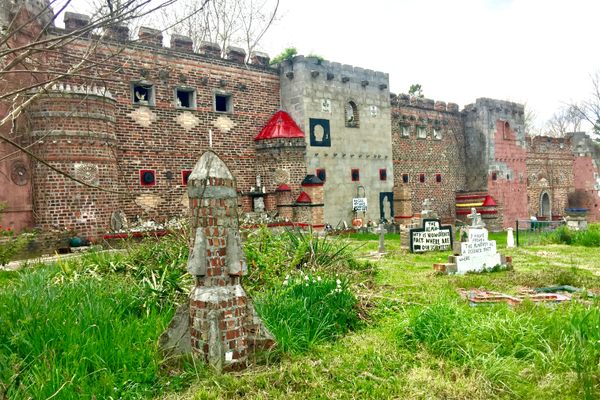Kowloon Walled City Park
Remnants of the most densely packed city in world history, that thrived on anarchy for 30 years.
At its peak, Kowloon had a population density of 3,300,000 people per square mile. Occupying every inch of hundreds of mid-rise buildings, Kowloon was such a lawless maze of alleyways and secret staircases, that police from the outside world would rarely venture in without a sizable group. There were two main alleys on the ground as well, but they did not get any natural light, instead the city had neon lights that were working 24 hours a day.
When it was first built, Kowloon was a military base with walls 13 feet high and 15 feet thick. During the 19th and early 20th century, it traded hands a number of times until after World War II when the Chinese made an attempt to reclaim their rights to the city. Before they could get control, an influx of immigrants occupied Kowloon, making its regulation and governance impossible by the Chinese authorities, as well as the British administration in Hong Kong.
Over the next 50 years, Kowloon grew at an enormous rate, swelling the 6.5 acre site to an overpopulated box of anarchy. As more immigrants moved into the city, ten-storey buildings were erected across most of the city, effectively blocking out the sunlight in the alleyways below. Kowloon was so dense and so tightly packed with buildings that one could go across the city North to South on a series of interconnected stairways and paths without touching the ground.
As Kowloon became more of a hazardous maze, outside authority in the area dwindled and Triad gangs moved into position. During the late 1950s and 1960s, drugs, prostitution and gang influence reached an apex, and Hong Kong police found themselves unable to gain control over the city-state. In 1973, an attempt to clean up the area resulted in the seizure of 4,000 pounds of drugs, or 1/10 of a pound of illegal substances per person.
The city was also home to many small businesses that functioned without licenses, namely 87 dentists, 150 small shops and over 60 doctors.
After years of lawlessness, the decrepit city was slated for demolition in 1987, and 6 years later when the eviction process ended, the city was razed. Despite losing most of the remnants of the old city, the southern gate and administrative Yamen building remained intact. Today, Kowloon is a city park, and visitors can stroll the same ground that once held opium dens, triad bars and thousands of people.






























Follow us on Twitter to get the latest on the world's hidden wonders.
Like us on Facebook to get the latest on the world's hidden wonders.
Follow us on Twitter Like us on Facebook